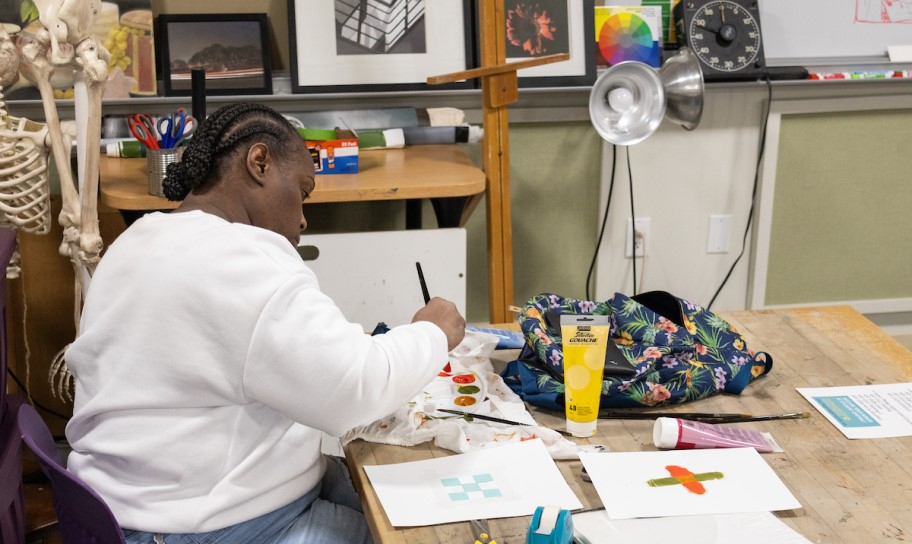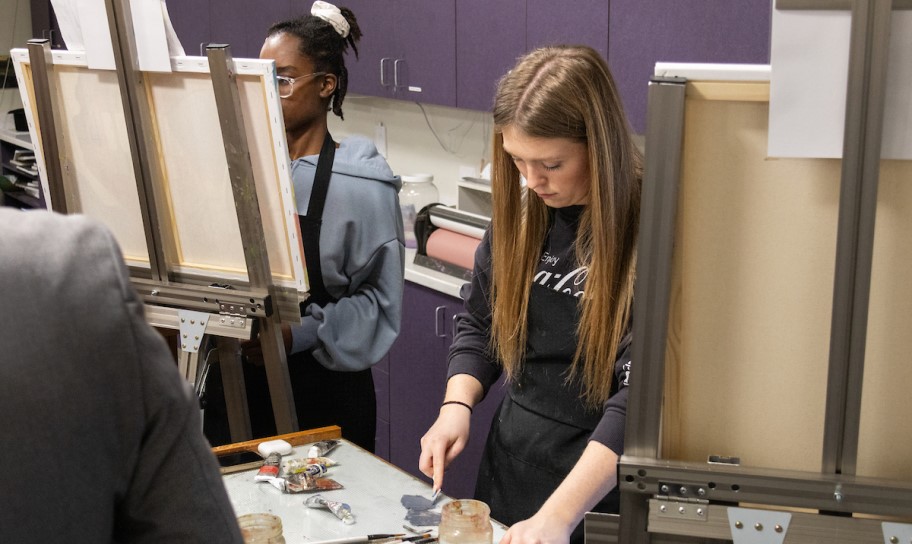Study Art at Concordia University Texas
Explore diverse artistic expressions with an Art Minor at Concordia University Texas. Students learn photography, painting, and the fusion of traditional and digital media. Our program goes beyond technical proficiency, emphasizing a deep understanding of visual culture, art history, and contemporary practices. Engage with guest artists and industry professionals, immerse yourself in a vibrant creative community, and chart a unique path toward a fulfilling career in the arts.
Thriving City Arts Community

15:1 Student to Faculty Ratio

Experienced, Professional Faculty
Grow your artistic gifts with an Art Minor at Concordia Texas— apply now for personalized guidance, diverse mediums, and a unique path to a fulfilling arts career.
Apply Now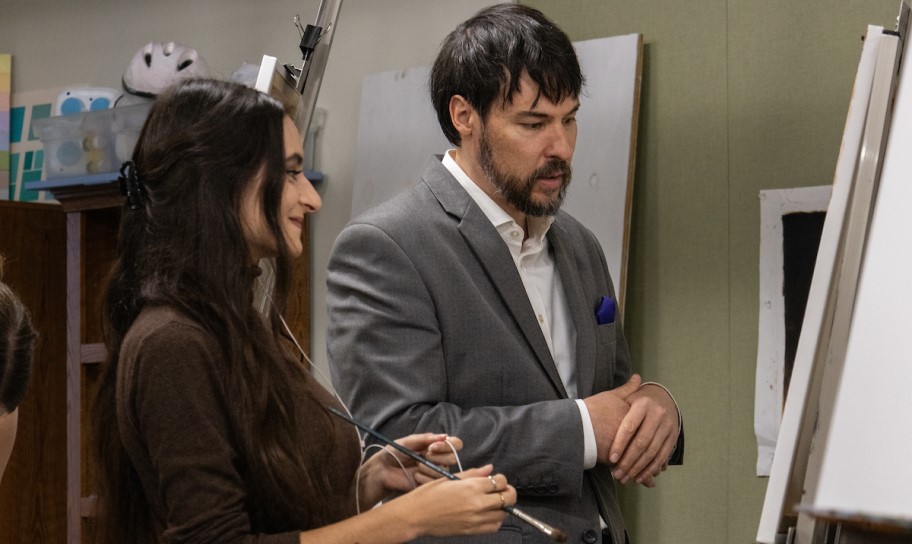
Personalized Artistic Development
Small class sizes ensure personalized attention, fostering your unique artistic voice and honing your skills in a supportive and collaborative environment.
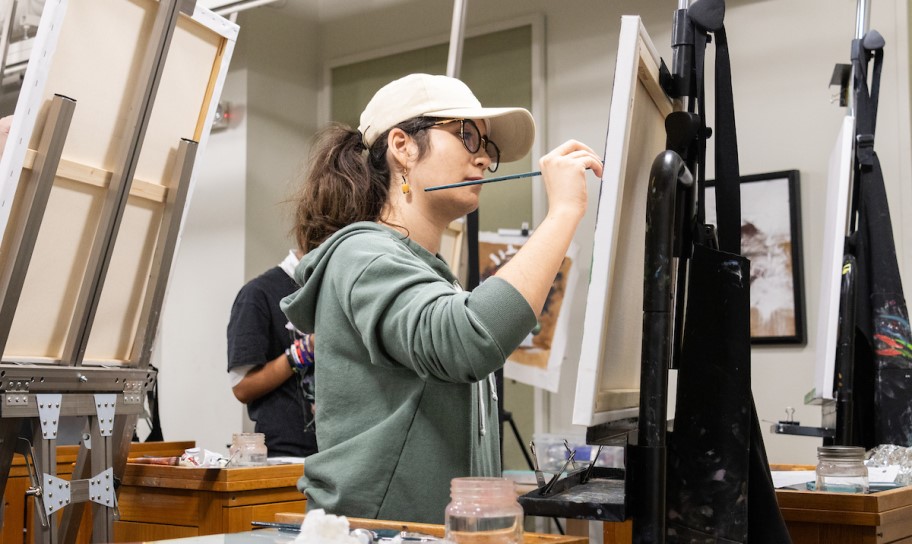
A Blend of Tradition and Innovation
Navigate the rich history of art while exploring innovative techniques, ensuring you are well-equipped for the evolving landscape of the contemporary art world.
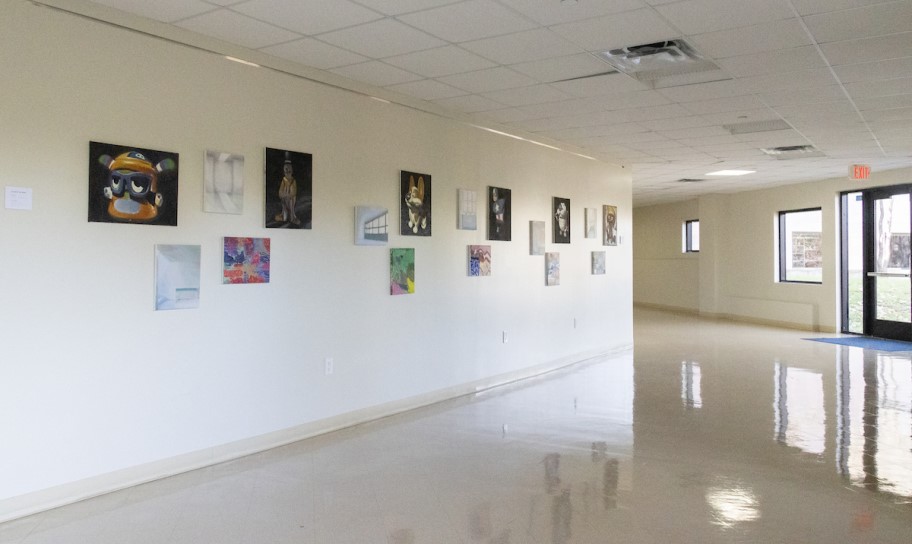
Professional Readiness
Master the technical and professional aspects of art in our program, gaining the skills to confidently showcase your work in galleries, museums, and diverse artistic platforms for a successful career in the arts.


Welcome to the Art Minor here at Concordia Texas! We nurture a wide array of conceptual approaches to contemporary art regarding creation and curating. You’ll explore both traditional and innovative techniques, experimental art projects, and theories of art from the Renaissance to the 21st century. Our graduates often work in nonprofit art spaces, schools with art programs, community co-ops, galleries, and museums as local as Austin and as far as Shanghai.
Chris FitzgeraldAssociate Professor or Art
- Art Critic/Reporter
- Background Designer
- Character Designer
- Photography Imaging Editor
- Storyboard Artist
- Archive/Collections Manager
- Art Appraiser
- Exhibition Designer/Coordinator
- Gallery Owner/Director
- Museum Education & Tours
- Arts Council/Culture Director
- Ceramicist
- Art Teacher (with certification)
Pick One Survey Course (3 credit hours):
- ART 1305 Intro to Art History
- ART 1315 Art Theory and Practice
Select Two Lower-Level Studio Courses (6 credit hours):
- ART 1306 Drawing Media
- ART 1308 Photography
- ART 2310 Glass
- ART 2320 Ceramics
Three Upper-Level Courses (9 credit hours):
- ART 3308 Color
- ART 3312 Painting
- ART 4312 Painting II
Join a creative community in a creative arts city—apply now.
Apply NowCTX Blog Posts




